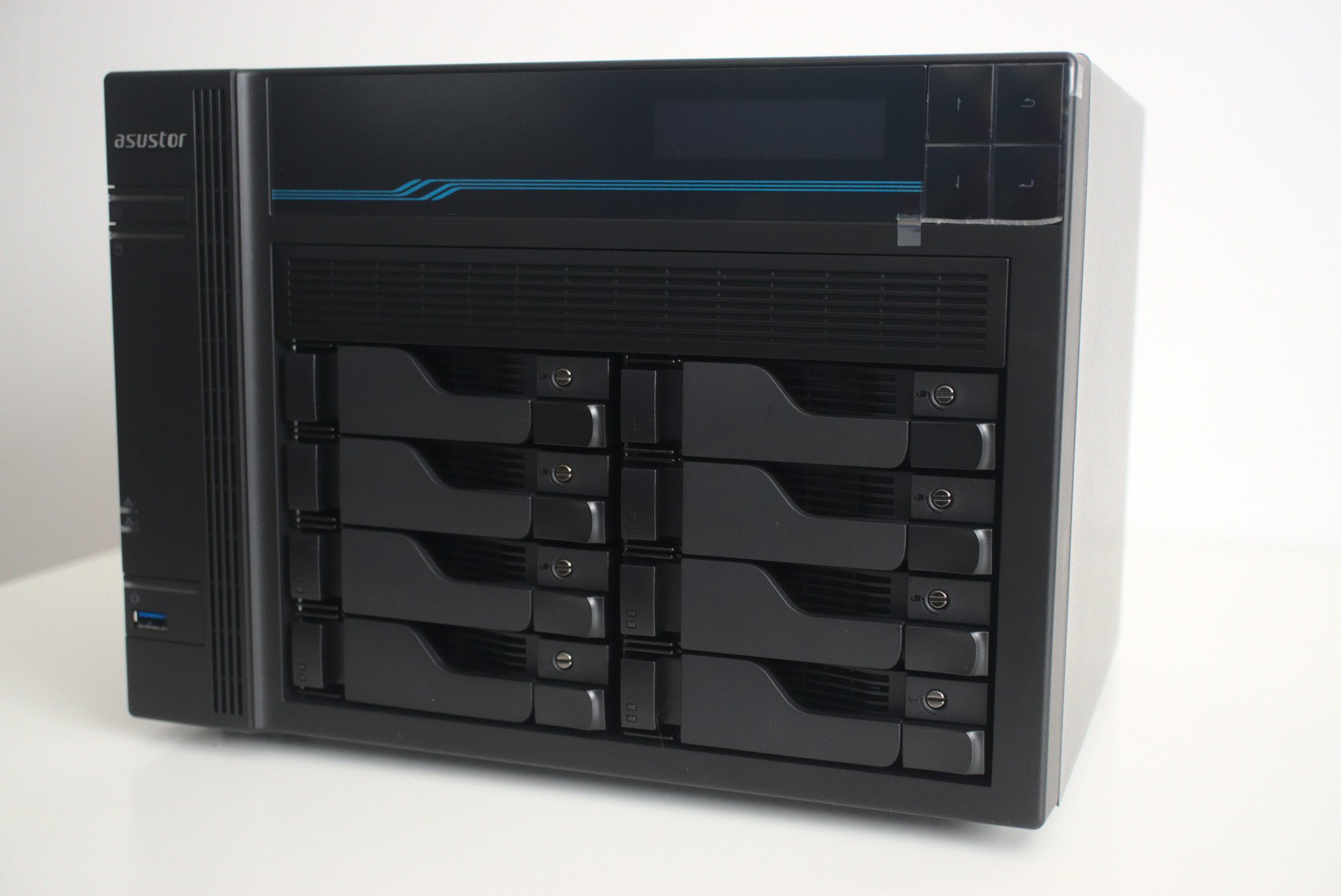Most NAS owners need a server with more than two bays, but there are plenty of scenarios where it makes sense to go all out with an 8-bay unit. That's what the AS6508T from ASUSTOR is. A premium NAS designed for serious homeowners and small businesses that need to store up to 128TB of data.
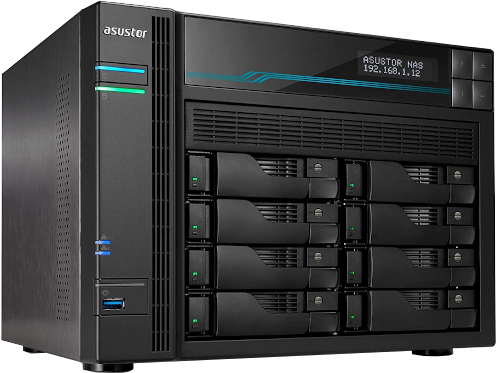
$1,097Bottom line: Eight bays, Intel CPU, up to 32GB of RAM, dual M.2 slots, 2.5Gb and 10Gb LAN. There's so much to love about the AS6508T.
For
- Eight drive bays
- Intel CPU
- Upgradable RAM
- NVMe
- 2.5Gb and 10Gb LAN
Against
- Pricey
- CPU could be better
- Design looks a little dated
ASUSTOR AS6508T tech specs
| Category | ASUSTOR AS6508T |
|---|---|
| CPU | Intel Atom C3538 |
| RAM | 8GB DDR4 2133MHz (max 32GB) |
| Drive bays | 8x (SSD/HDD)2x M.2 PCIe (NVMe) cache |
| Capacity | 128TB |
| Cooling | 2x 120mm fan |
| Ports | 2x 10Gb LAN2x 2.5Gb LAN2x USB 3.2 Gen 1 (1 front, 1 back) |
| Power draw | 66.9W |
| Dimensions | 215.5 x 293 x 230 mm(8.4 x 11.5 x 9 inches) |
| Weight | 6.2 kg(13.67 lbs) |
ASUSTOR AS6508T sports a modern, yet dated look
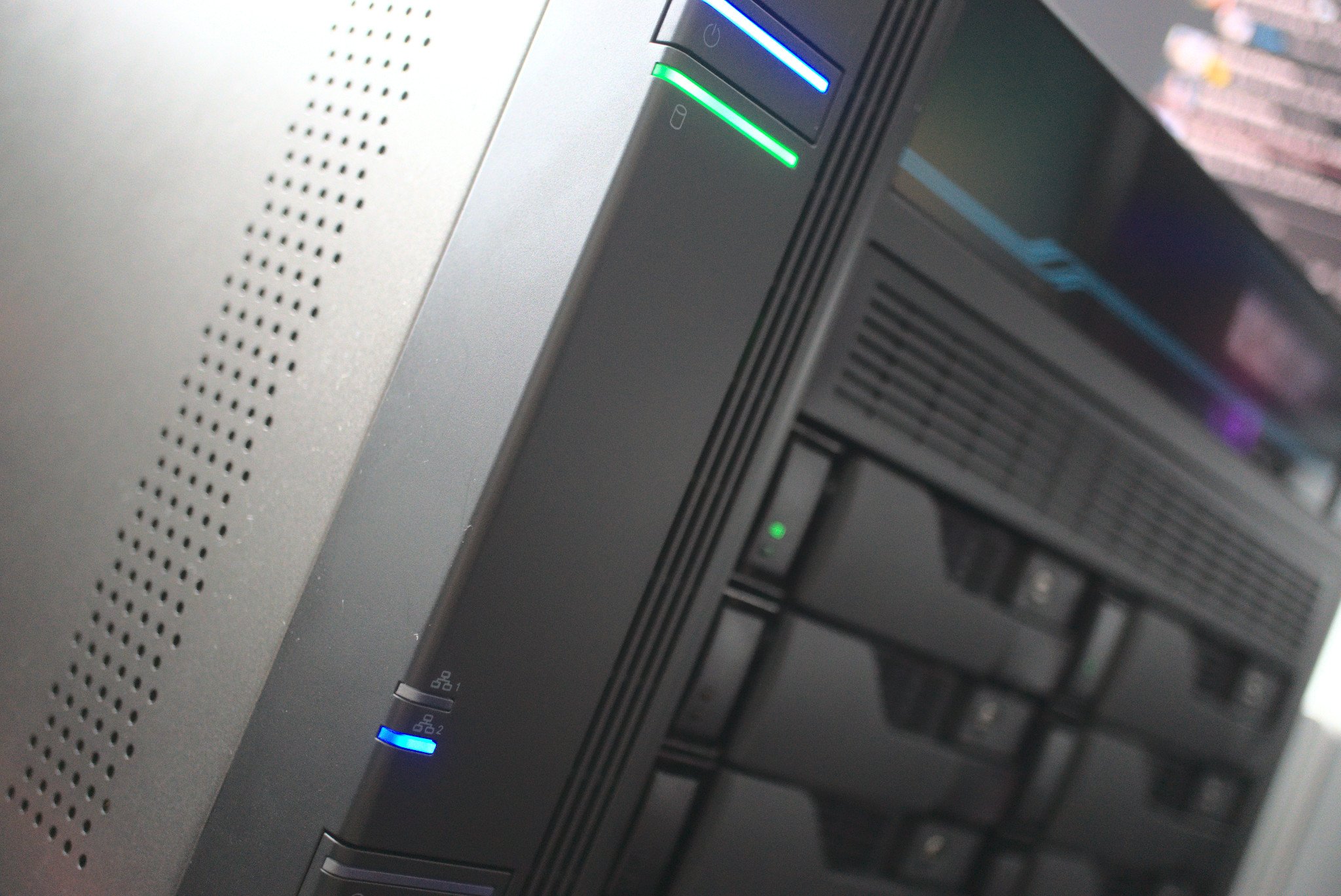
The ASUSTOR AS6508T is a large NAS server. The packaging is huge, but you do get a whole host of goodies as well as the NAS itself. A small box contains plenty of screws for 2.5- and 3-inch drives, two CAT5 cables, as well as two CAT6a cables for 10Gb connections.
ASUSTOR strikes a balance between old and new for the AS6508T design.
After unpacking the NAS, it's an exciting design to gaze at. On the front, you've got a plastic panel that houses a small LCD display, four buttons to manipulate on-screen functions, LED status indicators (as well as a power button), and the eight drive bays. I say it's an interesting design since it's modern, but classic and dated simultaneously.
Allow me to explain. The lighting, small indicators on each drive bay, and overall build feels very 2020, but the blue line accents, vent layout and buttons for the LCD display look a little dated. It's not a negative for me since I'm all about the classic look from decades past, but some owners may find it looks a little tired compared to other NAS vendors.
Speaking of drive bays, all eight bays can support 2.5- and 3-inch drives, so you can go all out with SSDs if you need the additional read and write speeds. Each bay can be secured with a flat head screwdriver. Extracting them is as easy as hitting the button and then pulling through the front of the NAS. Unfortunately, while most operations are tool-less, adding and removing drives to the bay bracket requires a Philips screwdriver.
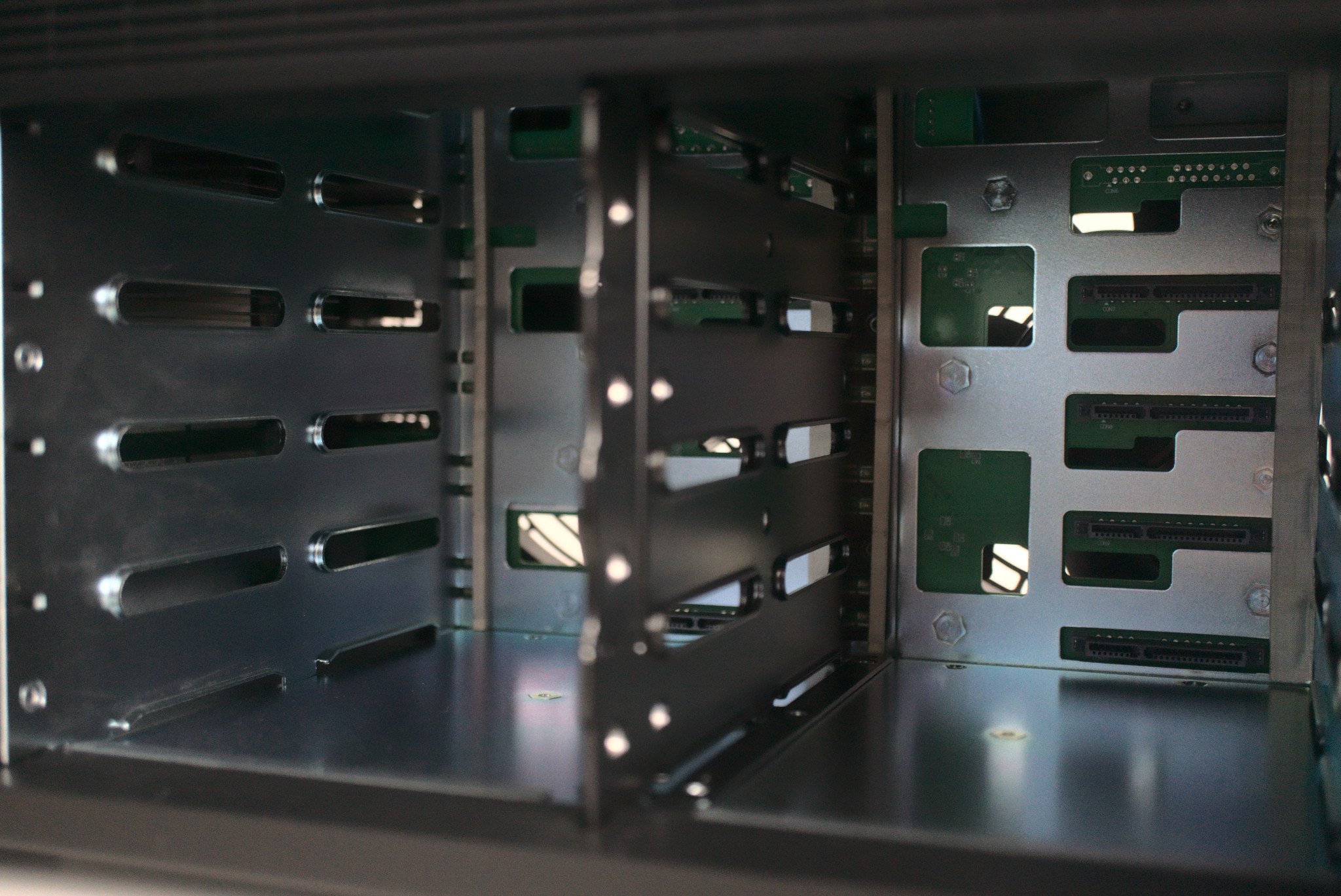
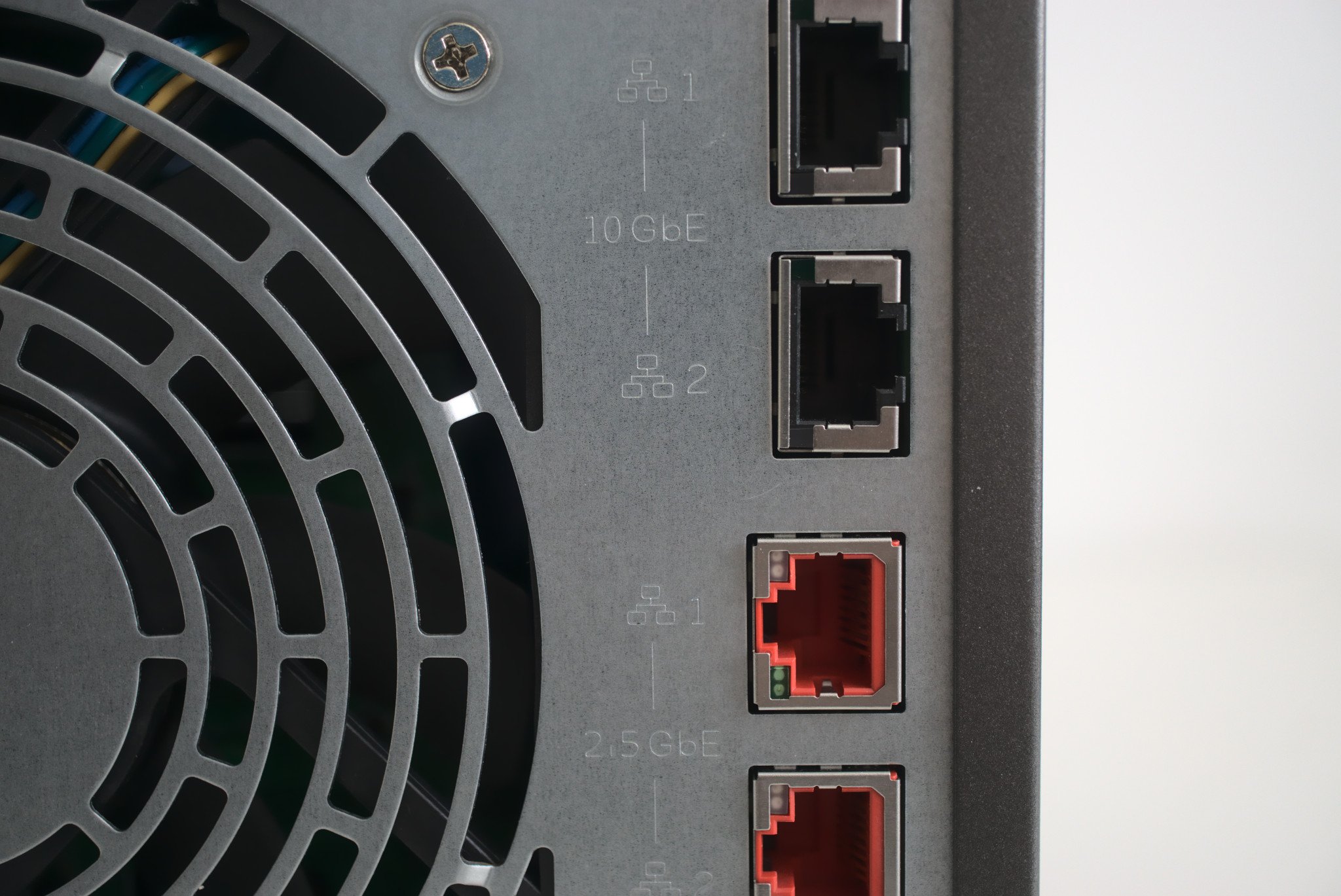
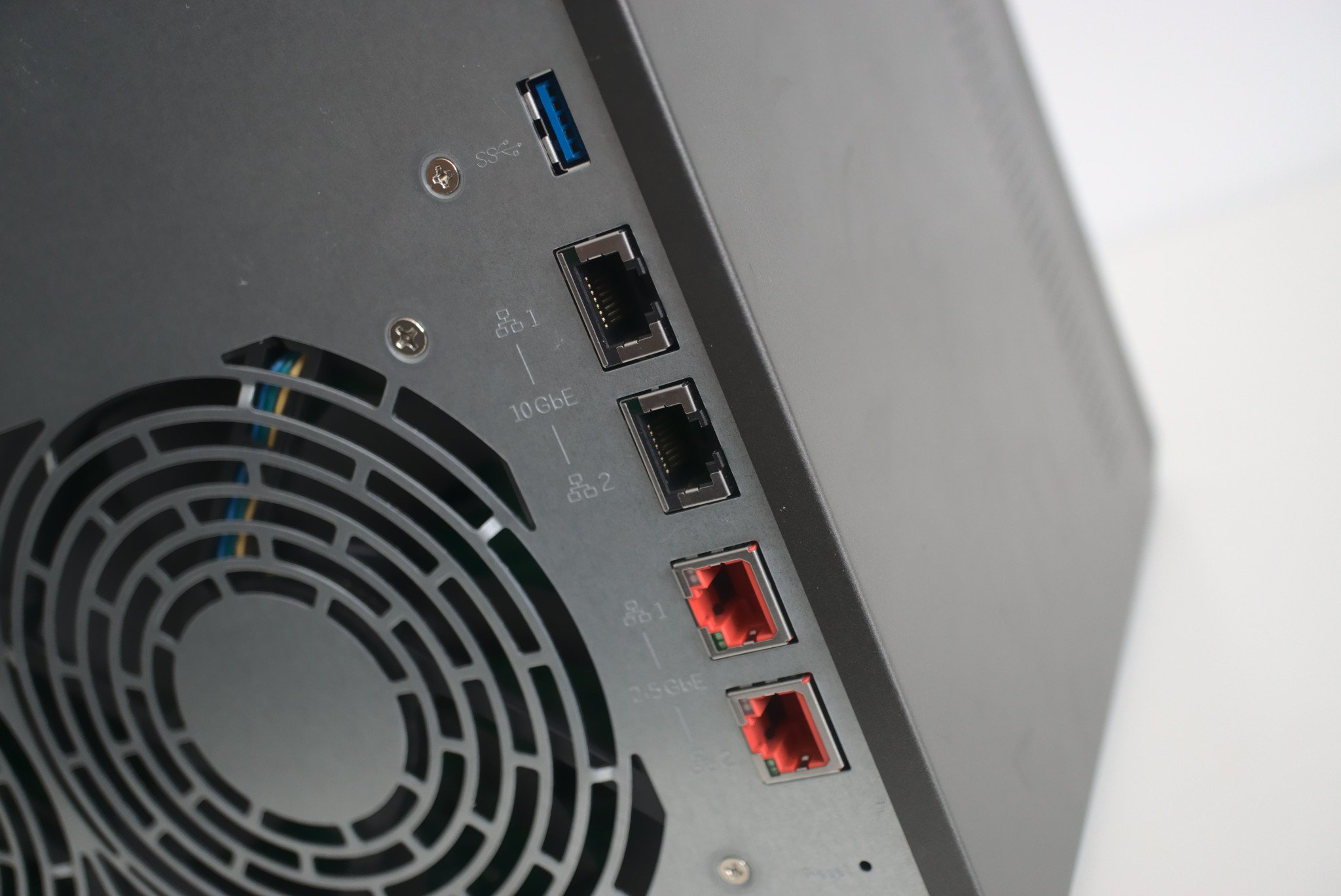
The two sides and top of the NAS are clean, aside from some vent holes. The rear of the NAS is where all the magic happens, however. I'm talking not one, but two 2.5Gbps ports and a further two 10Gbps ports, allowing you to go full speed on a 1,000Mbps, 2,500Mbps, and 10,000Mbps networks.
Two 2.5Gbps and two 10Gbps ports make the AS6508T incredibly fast and versatile.
The NAS may be priced high compared to low and entry-level servers, but one must take into account the feature set available here. The ASUSTOR AS6508T comes with not only eight drive bays with a capacity of 128TB, but also all the LAN ports you need for a capable home media server and centralized hub for all office workers to access simultaneously.
Removing the top and side panel requires the extraction of but three small screws. Once lifted off, access is granted to the two M.2 NVMe drive bays, which can be used for cache, as well as two RAM slots with one already populated with a single 8GB RAM module. This NAS supports a capacity of 32GB, making it a beast for heavy workloads.
Interestingly, ASUSTOR uses a small PSU that's 80 Plus Bronze rated. Another thing I noticed was the beefy heatsink sat atop the Intel processor, which can dissipate heat quickly with the two rear 120mm fans. I love using LCD panels on NAS servers. It's an easy way to check data or carry out a few minor tasks without having to log into the admin system on a PC or mobile device.
Picking the best drives for your NAS
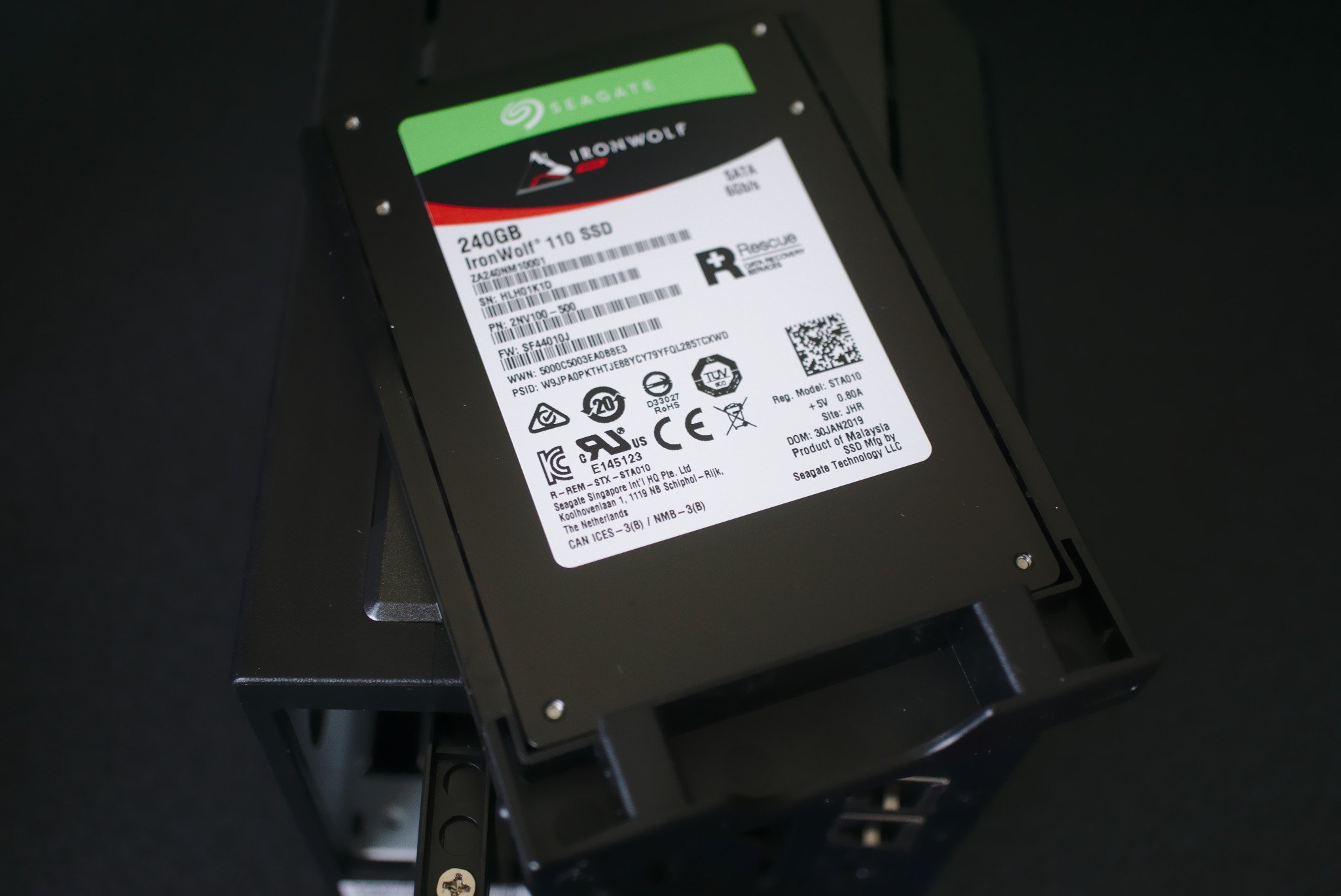
Sure, it's possible to take an old hard drive out of your desktop and use it inside a NAS, but you won't get many of the benefits that come with a drive specifically designed for NAS use. We rounded up the best NAS drives available to kit out the ASUSTOR AS5304T.
How to choose the right drive for your NAS
To test the AS6508T out, I threw in two trusty 2TB Seagate IronWolf NAS drives to see just what kind of numbers we'd get. Unfortunately, I was unable to connect the NAS to a 10Gb LAN since the switch I'd normally utilize for such cases is currently being dismantled at a local recycling center, and I've yet to replace it. Still, my secondary 2.5Gb network is still beyond the usual 1Gbps most homeowners, and small offices are used to.
Intel's CPU offers substantial performance
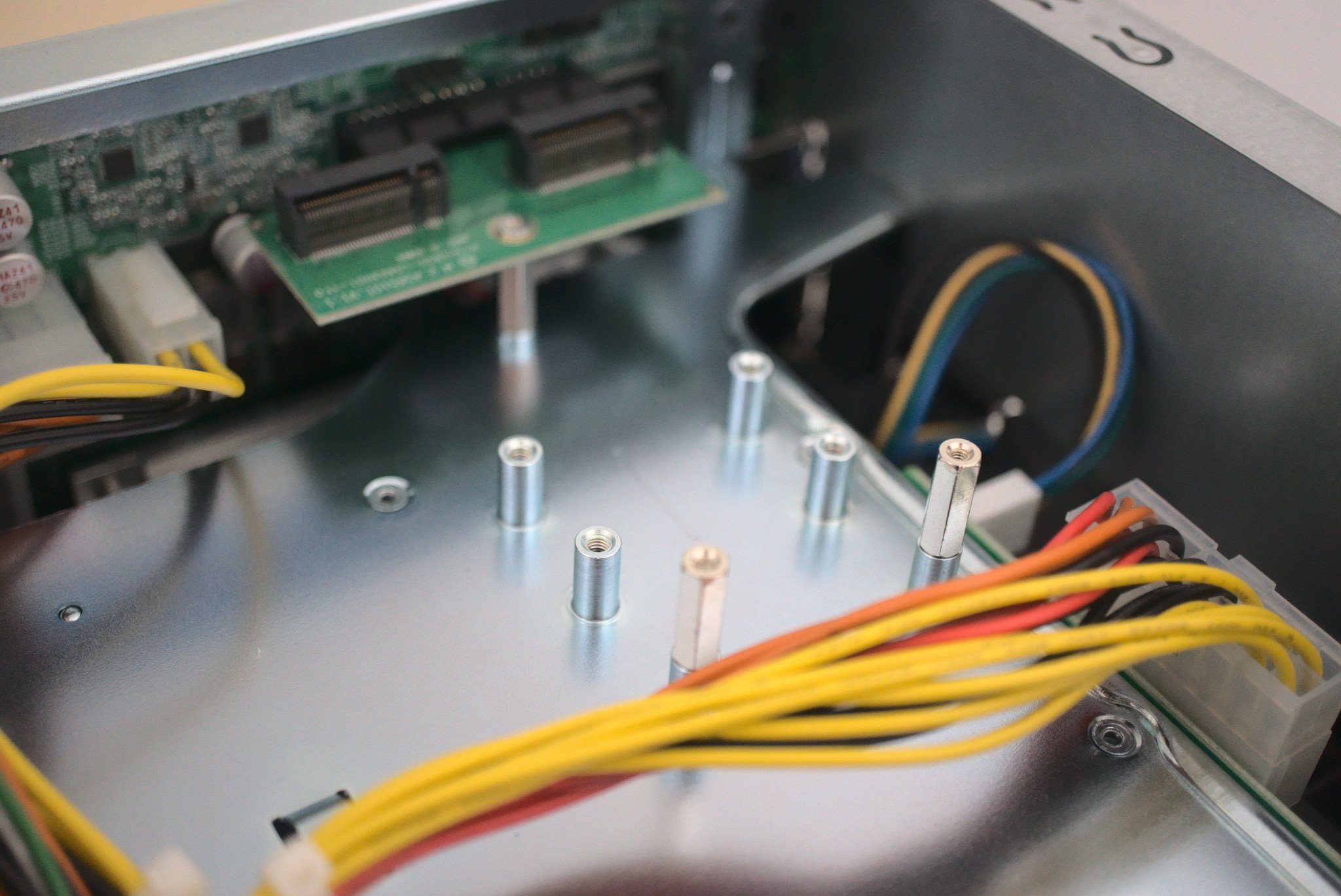
To benchmark a NAS, all we're really interested in is the CPU, RAM, and LAN ports. ASUSTOR tried to make sure there weren't any bottlenecks here with an Intel Atom Processor C3538, which isn't any comparison to the Core family, but it's certainly no slouch with 64-bit support and a clock speed of 2.10GHz. It's also quad-core, but without hyperthreading.
RAM starts at just 8GB, which is far more than what's found in lesser, more affordable NAS servers. The pre-installed module can be removed for up to 32GB to be installed, providing plenty of memory for tasks and services to utilize. Finally, the LAN port configuration is borderline ludicrous. Not only do we have dual-2.5Gb, but also dual-10Gb. You'd be lucky to see the former on NAS in this price range.
Setting up the NAS is a breeze. Thanks to the LCD display and accompanying buttons, it's possible to go all the way without touching an installation wizard. Simply confirm you wish for setup to initialize, and you're okay with all data being erased on installed drives, and you're good to go. I was expecting the AS6508T to perform exceptionally well in tests, and I was not let down by the results.
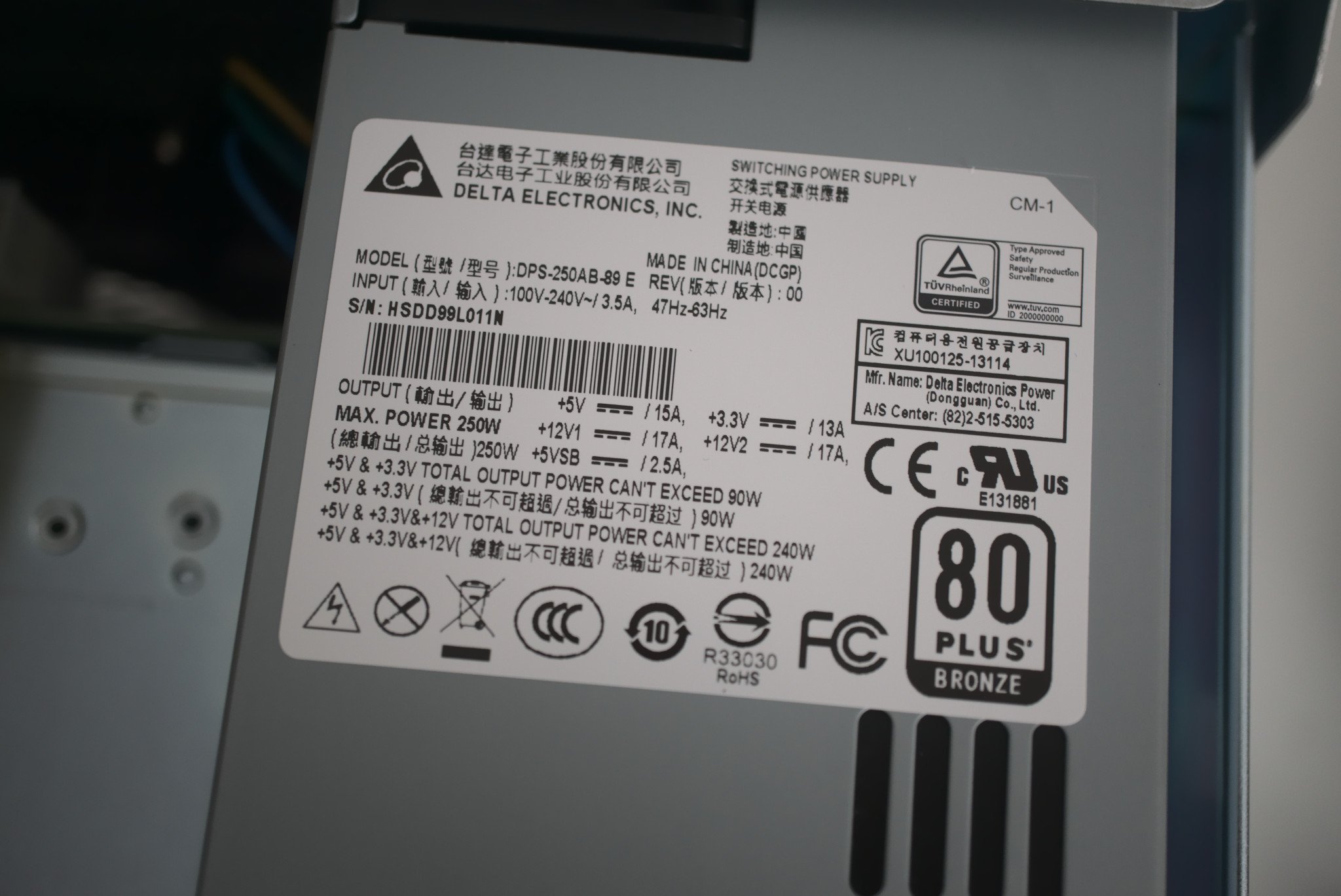
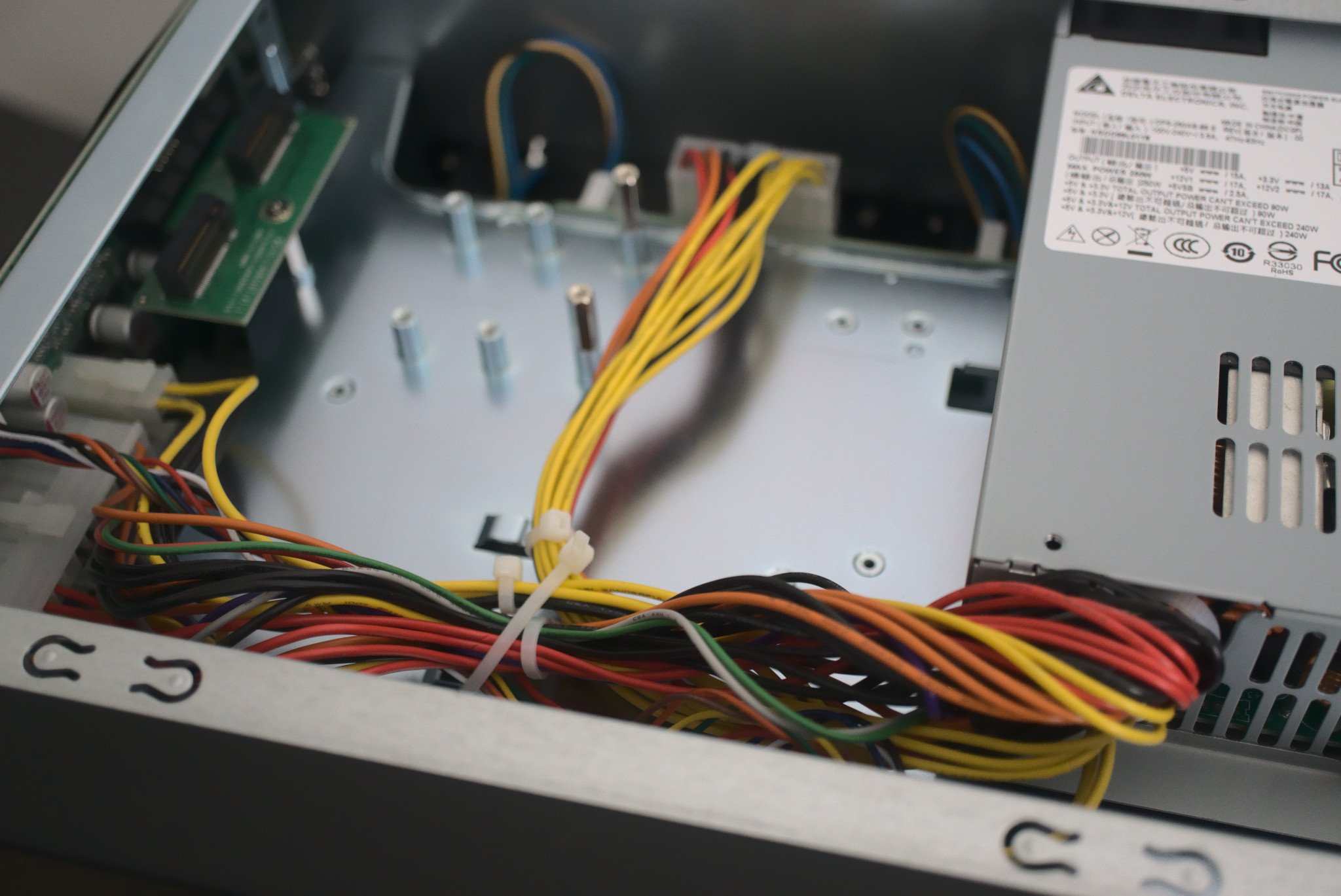
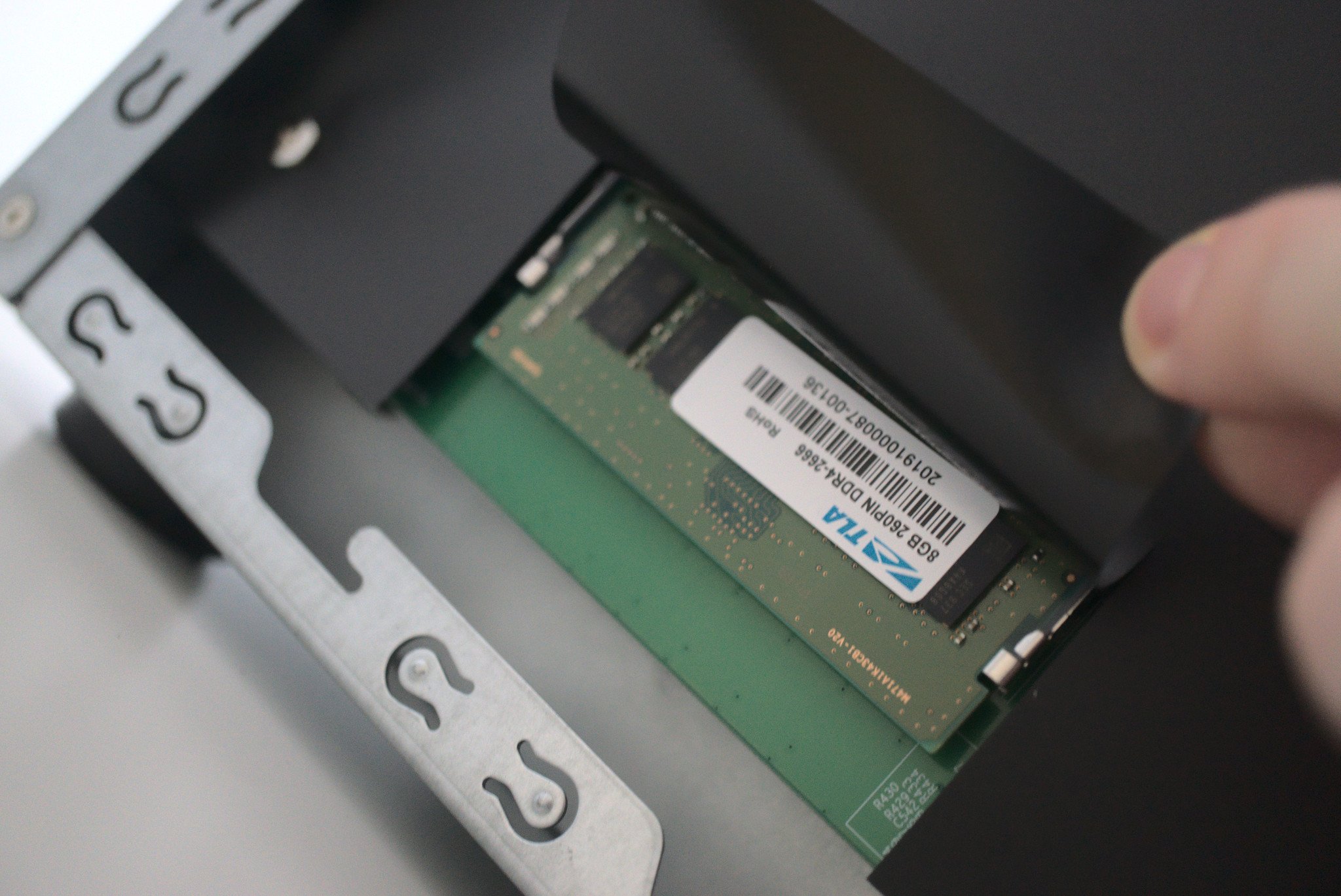
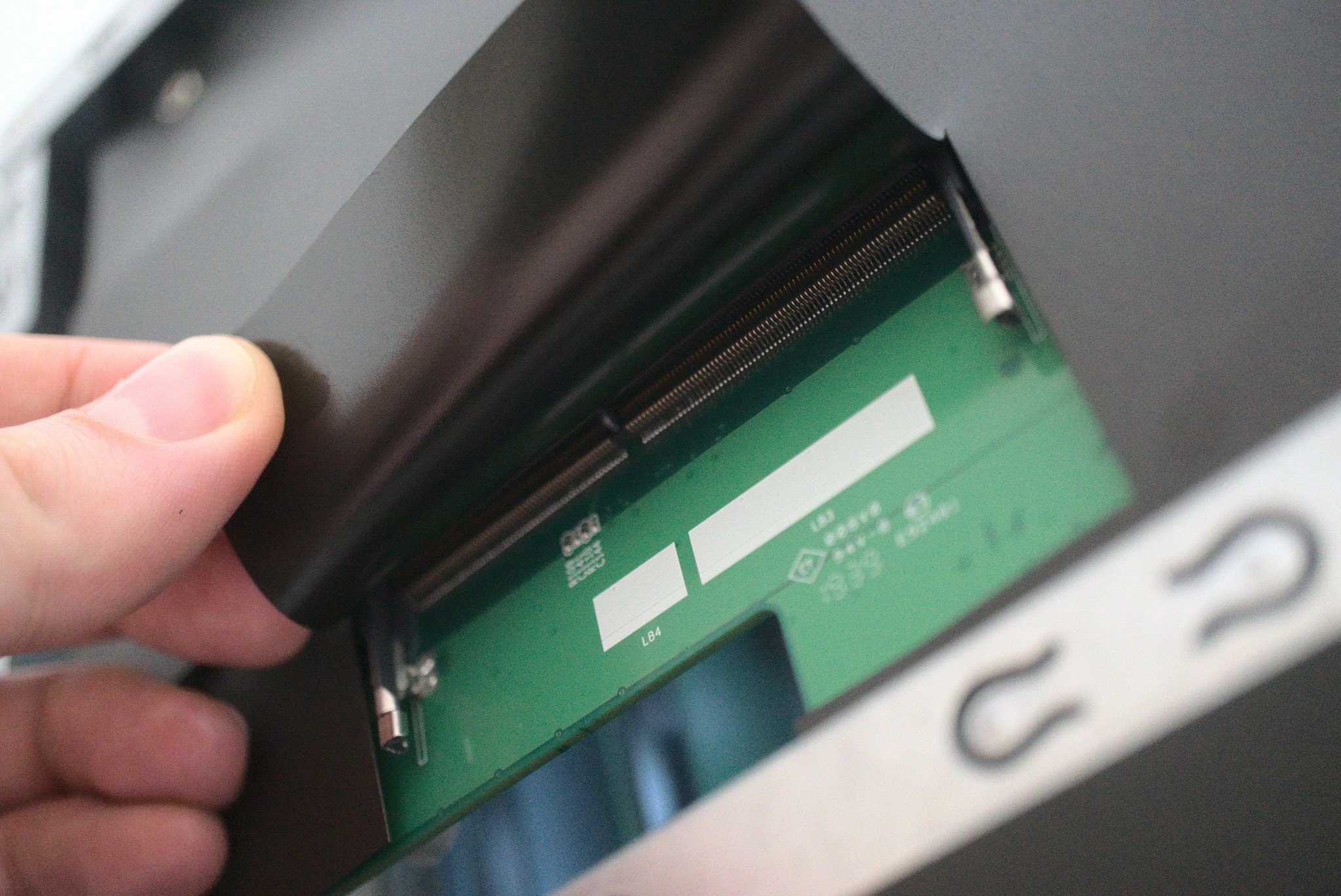
With the base configuration hooked up to a 2.5Gbps network, we're able to essentially hit maximum throughput on the connection. Whether streaming, transferring files to and from the NAS, or simply loading stuff on another network-connected device, I was seeing speeds well into the 500MB/s with link aggregation.
Speeds are impressive, so long as you don't activate two 10Gb connections.
Actual speeds will differ depending on the RAID configuration, as is the case with all NAS deployments. How would this NAS fare on a 10Gb network? I'd imagine you'd be fine with transferring files and using the NAS with a single 10Gb cable hooked up to the NAS, but if you want to see what a 10Gb aggregated connection fees like, the Intel Atom may struggle a little. I've seen this on other NAS servers with the same processor.
With support for Plex and plenty of other apps, the ADM OS (which I always read as ADAM) is easy enough to use. Compared to TerraMaster and Synology, it's definitely up there, but Synology for me still has the most polished user experience as a whole. Just like other NAS OS interfaces, ADM mimics a desktop OS, making it easy to get where you need to be.
What you might dislike about the ASUSTOR AS6508T
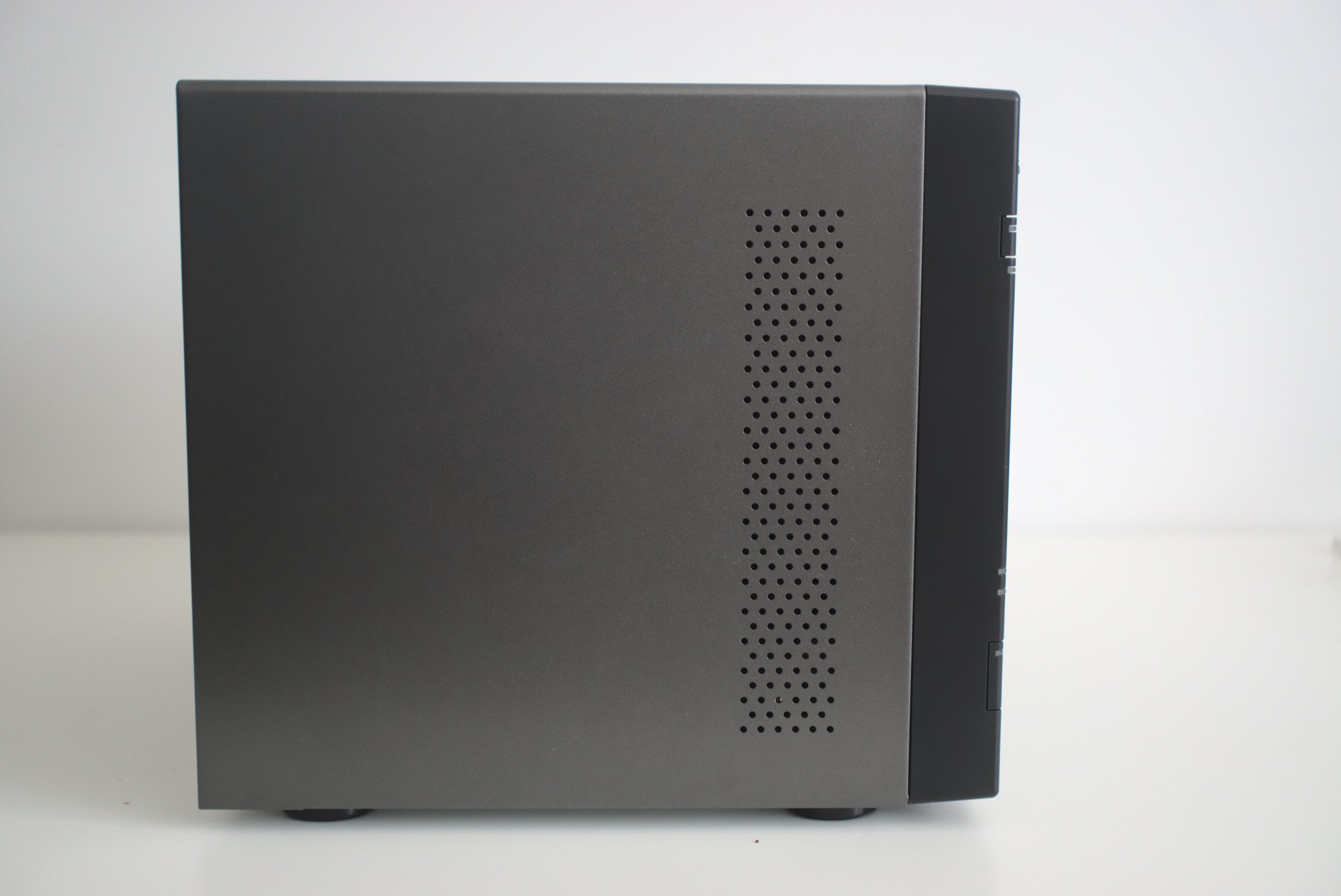
So, I love the design of the AS6508T. It's a mix of old and new design, and I'm a sucker for anything that resembles the retro age. But not everyone is like me, and we all have different tastes. The design of this NAS could upset you, especially if you've grown used to the silver and black metal slabs we've come to expect from NAS manufacturers. They all look the same, so it's good to see ASUSTOR try and stand out.
I noted the CPU as being positive when looking at just how much performance is available with the AS6508T. While that's certainly the case with 1Gb, 2.5Gb, and even 10Gb networks, you may struggle to push the boundaries to take advantage of the 10Gb link aggregation. This is largely down to the Intel Atom, just not rocking enough power.
The same goes for services and apps like Plex where it's good enough but not mind-blowing. At this price point, it would have been good to see a slightly upgraded processor. The rest of the NAS is top-notch, so it's a shame ASUSTOR didn't match it with a Xeon or Core i3 CPU. Still, for most applications, it's good enough.
Should you buy the ASUSTOR AS6508T?
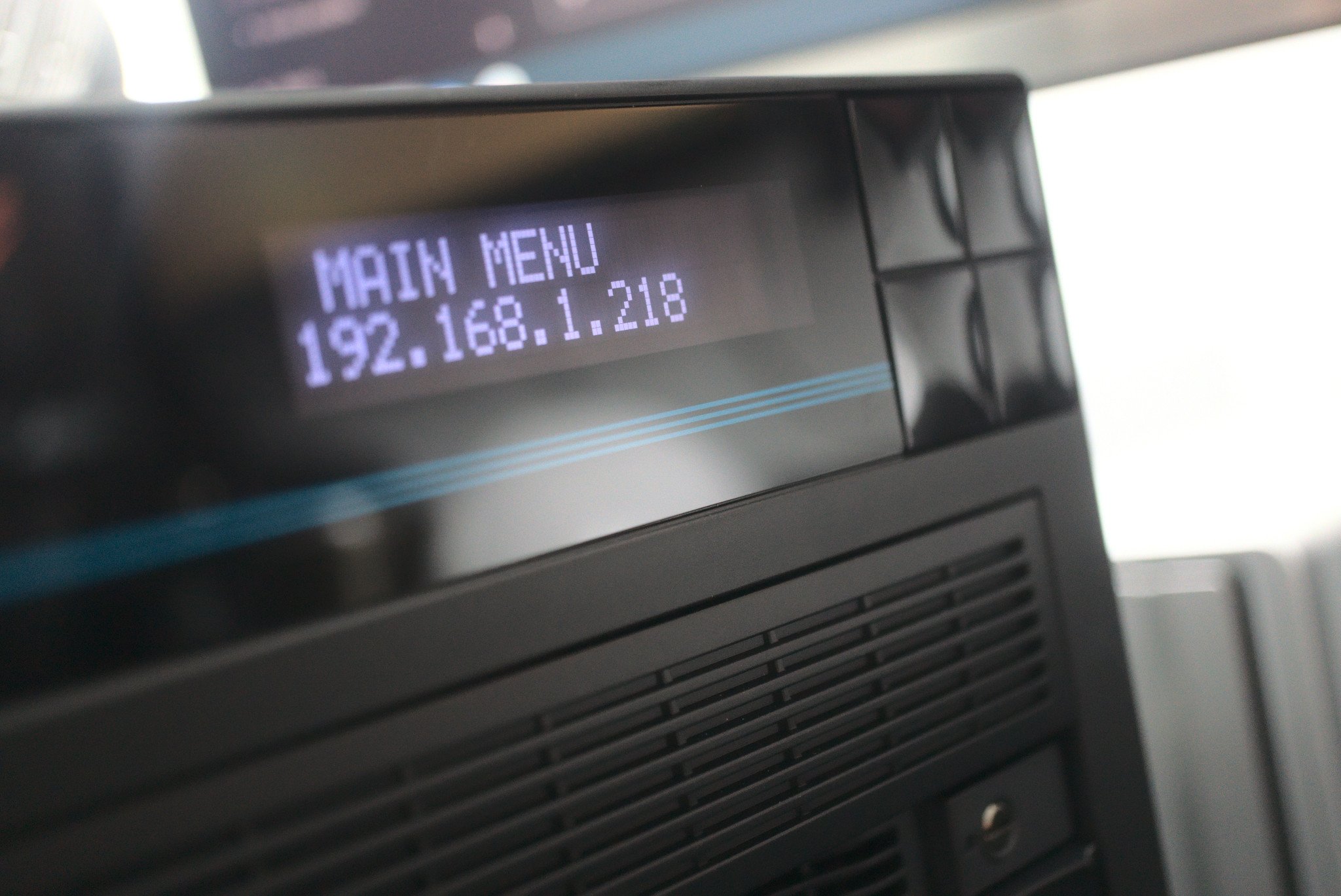
For power users who are going to be using a dual 10Gb linked NAS, I'd look elsewhere at a NAS with a better CPU. If you need a NAS with plenty of storage capacity, all the LAN ports you'd ever require, and upgradable RAM to allow for multiple accounts to access data simultaneously without issue, this is a sound NAS.
The ADM is a joy to use, so too is the LCD panel on the front of the AS6508T. There's much more to love about this NAS, like the dual M.2 slots, upgradable RAM quirky design, silent operation, and easy access to all the components. A nice touch with ASUSTOR NAS for business is the inclusion of four free IP camera licenses.
These can be used to set up IP cameras with the NAS at home or business without having to fork out a monthly fee. Pair that up with the countless apps you can download and use on the NAS, and you've got a powerful hub for the home or office.

Rich Edmonds was formerly a Senior Editor of PC hardware at Windows Central, covering everything related to PC components and NAS. He's been involved in technology for more than a decade and knows a thing or two about the magic inside a PC chassis. You can follow him on Twitter at @RichEdmonds.
